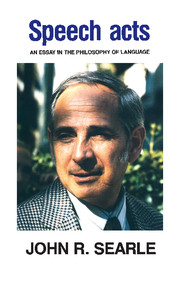Summary
The philosophy of language
How do words relate to the world? How is it possible that when a speaker stands before a hearer and emits an acoustic blast such remarkable things occur as: the speaker means something; the sounds he emits mean something; the hearer understands what is meant; the speaker makes a statement, asks a question, or gives an order? How is it possible, for example, that when I say “Jones went home”, which after all is in one way just a string of noises, what I mean is: Jones went home. What is the difference between saying something and meaning it and saying it without meaning it? And what is involved in meaning just one particular thing and not some other thing? For example, how does it happen that when people say, “Jones went home” they almost always mean Jones went home and not, say, Brown went to the party or Green got drunk. And what is the relation between what I mean when I say something and what it means whether anybody says it or not? How do words stand for things? What is the difference between a meaningful string of words and a meaningless one? What is it for something to be true? or false?
Such questions form the subject matter of the philosophy of language. We must not assume that in the versions I have stated they even make sense.
- Type
- Chapter
- Information
- Speech ActsAn Essay in the Philosophy of Language, pp. 3 - 21Publisher: Cambridge University PressPrint publication year: 1969
- 2
- Cited by

